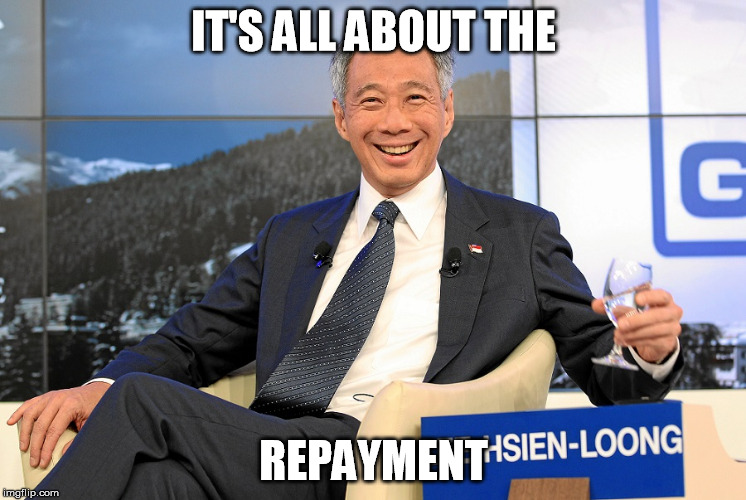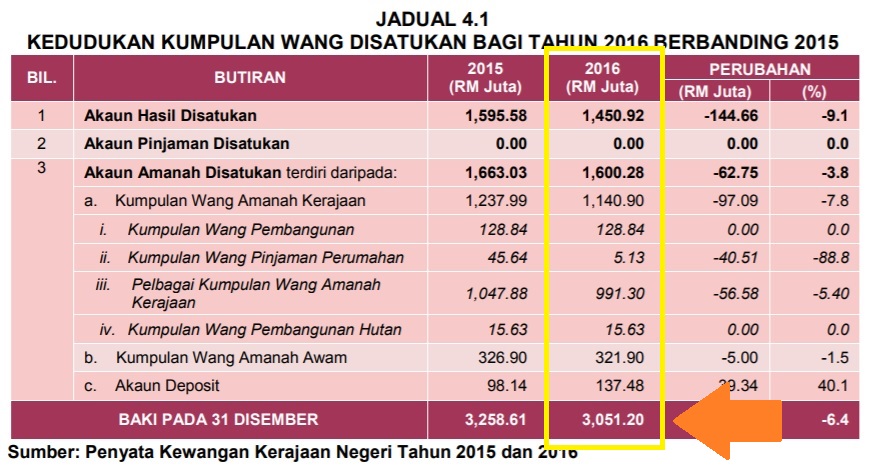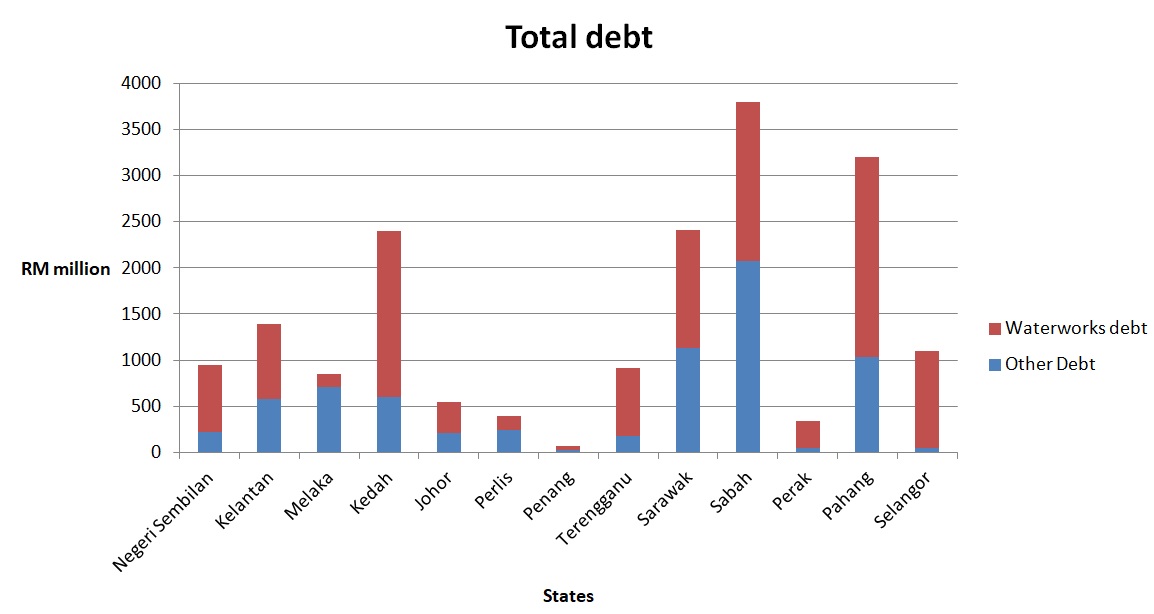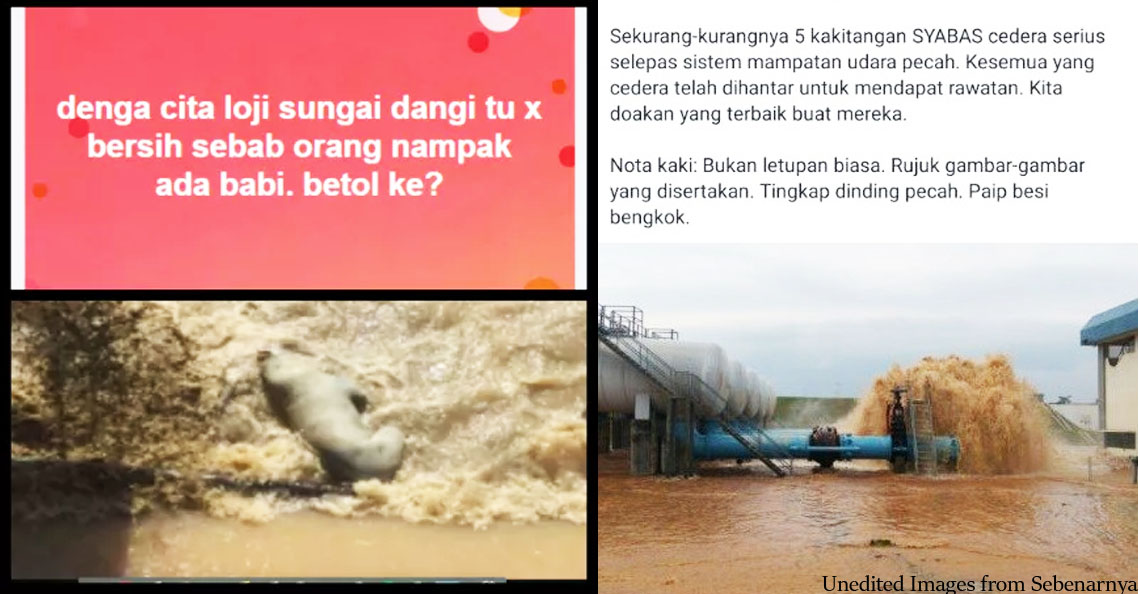You’ll never guess why Penang is the only debt-free state in Malaysia

- 2.1KShares
- Facebook1.9K
- Twitter12
- LinkedIn30
- Email43
- WhatsApp140
Most Malaysians do not seem to have their finances together. A 2015 Bank Negara Malaysia survey revealed that most Malaysians were spending too much and saving too little. Even Malaysian investors, people who are supposedly more smart with money, are found to be the most in-debt in the whole of Asia.

The alarming financial situation seems to spill over to our government as well. Malaysia government’s debt was RM687.43 billion as of September 2017! That’s RM22,175 for every Malaysian! But actually, it’s not really as bad as you might imagine. We’ve recently written about the federal government’s debt, and found out under certain circumstances, it might actually be a good thing.
But then it turns out, the state governments also have their individual debts! In 2016, the total debt of all states was at RM17 billion! But is that a good or bad thing? How did Penang become “debt free”? Is it a coincidence that Pahang, the home state of Prime Minister Najib has the highest debt of RM2.9 billion? We take a closer look at what these numbers really mean.
State government debts very much resemble our debts
Just as a quick recap, the federal government’s debt is the total amount of money that it has borrowed. The lenders could be other countries or financial institutions, but mostly, it is actually owed to local institutions here in Malaysia. Generally, the sum of the debt doesn’t signify anything much by itself. After all, our neighbour Singapore has a debt of 354.97 billion USD, (compared to ours at 175.58 billion USD), and they’re still doing fine as a developed country!

The problem arises when we fail to pay up when the time comes, and countries around the world will declare us bankrupt once that happens. But being the responsible nation that we are, that has never happened to us before. For state governments on the other hand, the situation is less complicated, because they mostly only borrow from the Federal government. So about that RM17 billion total state debt mentioned earlier? That’s ALL owed to the federal government.
“Generally, states may only borrow from the federal government. Other borrowings must receive the approval of the federal government and cannot be for more than a period of more than five years.” – Sharifah Zubaidah Binti Abdul Kader Al Junid’s article on Malayan Law Journal
State governments borrow money for the same reason, i.e. to fund developmental projects and public infrastructure for the betterment of the state. Much like the common rakyat, instead of saving for who knows how many years until you have enough money to buy a house, most of us would just borrow the money from the bank, and pay back our debt gradually over the years.
“According to the Finance Ministry, the Federal Government’s loan to state governments is to fund basic infrastructure projects such as water supply and low-cost public housing…” – Chow Yu Hui, Pahang State Assemblyman, quoted from The Star
More than HALF of the states made losses in 2016

Like any other major institution handling large sums of money, state governments are subjected to auditing, and this is done by the National Audit Department. The results are published yearly in the Auditor General’s report, with individual breakdowns on spending, debt, and revenue for each state. You can find the 2016 results here, but its only available in Bahasa Malaysia.
In 2016, only 6 states managed to make more money than they spent (budget surplus), while 7 states spent more money than they made (budget deficit). Below is the list of states arranged in decreasing order of surplus/deficit.
- Surplus states: Sarawak (RM346.24 mil), Johor (RM119.07 mil), Penang (RM89.21 mil), Sabah (RM66.38 mil), Melaka (RM23.88 mil), Perak (RM2.8 mil)
- Deficit states: Terengganu (RM262.33 mil), Selangor (RM144.66 mil), Pahang (RM74.60 mil), Kedah (RM59.28 mil), Kelantan (RM33.47 mil), Perlis (RM10.98 mil), Negeri Sembilan (RM3.39 mil)
Of course, these are only the performance of each state in 2016, and it doesn’t reflect what the states actually have in their bank account(s). That number is actually reflected here in the Kumpulan Wang Disatukan/ State Consolidated Fund. Take Selangor for example, while it may have had a deficit of RM144.66 mil, their State consolidated Fund is actually at RM3.05 billion:

In terms of revenue, states can have quite different sources (Penang made RM284 mil from land premiums, while Sarawak made RM1.1 bil from dividends alone), but what about state debts? Some states would owe the federal government billions of ringgit, while others less than RM100 million. We took a look at what they were spending the borrowed money on, and noticed that almost all the states incur a large portion of their debt for the same reason…
Every state is in debt, and its all because of … WATER?!
From the highest debt of RM3.7 billion (Sabah) to the lowest of RM66.3 million (Penang), a large part of state debts is actually spent on works surrounding water supply to the states. Check out this (very) pretty graph we’ve made to better illustrate the fact:

As you can see, half or more of the total debt of most states actually go to water related programs. If you go through each report, the pattern is consistent in all states even since 2012. But why is this the case? To get a rough idea, we took a look at the state that had to spend the most on water.
Pahang spent RM2.1 billion in 2016 on water supply related things, and a big reason for this is the fact that Pahang is an important water catchment area in Peninsular, which supplies water to Terengganu, Kelantan, Perak, Negeri Sembilan, Johor, as well as themselves. Running the vast system of pipes, water treatment plants and dams is no cheap business. During the drought season in 2016, Pahang had to fork out RM60,000 daily for 2 weeks to pump water to just 3 water treatment stations. In 2014, it was reported that Pahang had about 80 water treatment stations throughout the state, and that’s not counting the dams.

If that’s not convincing enough, you should also know that “water supply and services” USED to be the state government’s responsibility, but managing water supply was so complicated and expensive, the Parliament amended the constitution in 2005 so that the federal government could share the responsibility of water supply with the state, making projects like the Pahang-Selangor Raw Water Transfer plant (a.k.a S.E.A’s longest tunnel) possible.
“The lack of adequate financial resources in the states has led to deterioration in the quality of services provided. The amendment was thus made to eradicate these problems.” – quoted from Water Resource Management In Malaysia: Legal Issues and Challenges, by S.A. Rahman & R.M. Khalid
The only states that do not spend a big cut of their debts on water is Melaka and Perlis, which probably has to do with how small their states actually are. Addressing Penang’s debt, you can now see how minuscule it actually is compared to all other states. Even so, RM42 million out of the RM66.3 million debt is owed to the federal government for water stuff. But, the Penang state government found a way completely “clear off” its debts to the federal government.
Basically, Penang made a deal with the federal government to take over Penang’s water supplying responsibilities. The water debt was converted to a 45 years annual lease payment, where Penang would need to pay the federal government RM14.56 million yearly. In exchange, Penang also got a RM1.2 billion grant to expand the Mengkuang Dam. So its not like Penang doesn’t have any debt with the federal government anymore, it is just transformed into a different kind of repayment.

97% of Malaysia’s raw water is supplied by rivers, but are they under threat?
Most Malaysians would have definitely felt the pinch of water rationing and disruptions before, and understand (especially in those moments) how important clean and uninterrupted water supply is in our daily lives. According to this review paper from University of Malaya, there are some 150 river systems in Peninsular Malaysia, and 50 in Sabah and Sarawak. These rivers supply about 97% of Malaysia’s raw water, but as of 2009, 47% were found to be either slightly polluted or polluted.

From the state government accounts, we can see that the supply and treatment of water to consumers is an extremely expensive affair. Polluted rivers will probably spell more work and cost for the balance sheets. One solution to the issue is the privatisation of certain steps in the water supply process, especially water treatment, but some have concerns about that as well:
“The main contention is that water should not be treated as a commodity but rather an internationally sanctioned human right.” – Sharifah Zubaidah Binti Abdul Kader Al Junid’s article on Malayan Law Journal
So the next time you turn on the tap or flush the toilet, take a little time to appreciate how much debt governments had to take on for that to happen. It’s rare to really be able to raise an example of government cooperation lately.
- 2.1KShares
- Facebook1.9K
- Twitter12
- LinkedIn30
- Email43
- WhatsApp140



